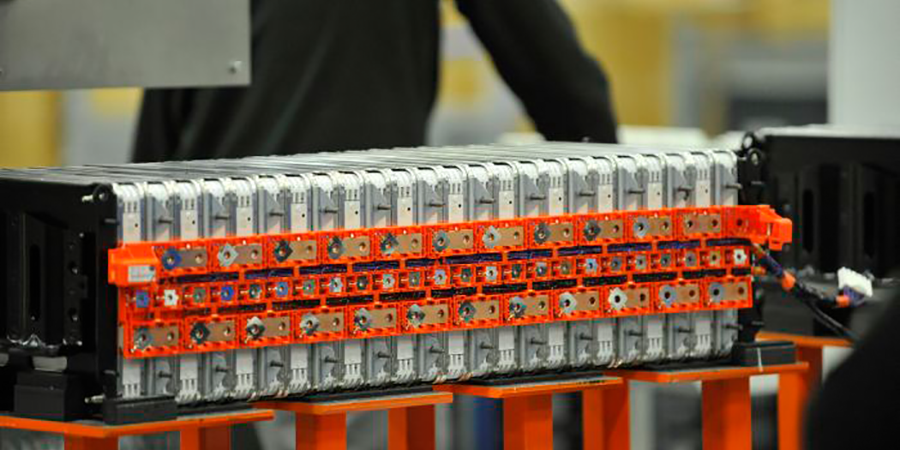UK government announces battery strategy
The battery strategy is embedded in the £4.5 billion investment program for key manufacturing industries unveiled a few days ago, of which £2 billion is earmarked for the automotive and battery industries. Specific investments outlined in the battery strategy include a further £38 million for the UK Battery Industrialization Centre, £12 million for the Advanced Materials Battery Industrialization Centre and £11 million for 20 technology innovators across the battery value chain.
The UK government intends to attract investment and collaboration and counter the industrial support that other governments, and most significantly, the Chinese government, are investing in their battery industries. “The strategy focuses on international cooperation and market access for critical minerals and aims to create an environment that welcomes foreign investment while carefully considering the impact on national security,” the strategy statement says.
“The government’s 2030 vision is for the UK to have a globally competitive battery supply chain that supports economic prosperity and the net zero transition,” said Industry Minister Nusrat Ghani in the foreword to the strategy. “The UK will be a world leader in the development and manufacture of sustainable batteries, underpinned by a thriving battery innovation ecosystem.”
Making Batteries in the UK
The UK should become a battery manufacturer, standards for battery norms for reuse and recycling should be developed, and domestic businesses should be financed. Here, the strategy paper states that: “Government-backed finance options are available through the British Business Bank (BBB), UK Infrastructure Bank (UKIB) and UK Export Finance (UKEF) to help UK companies develop and scale their business. “
The strategy document identifies a significant challenge in securing battery manufacturing equipment. Here, the strategy paper notes that China, South Korea, and Japan dominate the market for battery manufacturing equipment, with only modest European capacity, primarily in Germany and Austria. The UK strategy paper notes that while gigafactory construction costs are estimated at £85 to 100 million per GWh of capacity and around 40 to 60% of the cost relating to process equipment, the investment in quality manufacturing equipment is paramount since this represents “a source of efficiency, presenting opportunities for process optimisation and energy cost reductions at every stages.”
Powering the making of batteries presents a significant challenge. Like Germany and much of Europe, the UK has a limited renewable and fossil-fuelled power supply. This leads to higher energy costs and therefore higher manufacturing costs, making it difficult to attract manufacturing activity. The paper notes: “According to the APC, the largest gigafactory in the UK is expected to consume over 2TWh of electricity per annum once fully operational.” The paper mentions a “high perceived cost of manufacturing in the UK and represent notable barriers to investment.” Therefore, the government is initiating programs to decrease energy costs for businesses and corporations, including the Net Zero Growth Plan, published in March 2023. Lower energy prices for businesses and industry are also addressed in the strategy by energy bill relief schemes for non-domestic consumers. This is apparently adequate for the UK government’s superlative goal “that Britain will have wholesale electricity prices that rank among the cheapest in Europe by 2035.”
Critical Raw Materials and international agreements
Like the rest of continental Europe and most places in the world outside of China, the supply of critical raw materials for batteries is in urgent need of attention. The UK will turn to its traditional trade partners here, with the USA, “such as the ‘Atlantic Declaration for a Twenty-First Century US-UK Economic Partnership,’ which committed to cooperation on diverse, resilient, and secure critical mineral and battery supply chains, including negotiations on a Critical Minerals Agreement,” – noting here that critical raw materials are still in negotiation.
The UK benefits from historical connections with Australia, the world’s largest supplier of raw lithium, although 50-60% of all lithium – including Australian lithium – is still processed in China. Australia also has significant deposits of nickel and cobalt. The UK battery strategy notes that it relies on the UK-Australia Free Trade Agreement, which was signed in 2021 and will come into force at the end of 2023. This agreement reduces barriers to trade – including in critical minerals – with what the UK government estimates will bring £10.4 billion in economic benefits for the UK by 2035. In contrast, the German and EU governments recently failed to secure such an agreement with Australia.
The UK also intends to cultivate a lithium extraction industry and directly support firms developing domestic mining capabilities, with the Automotive Transformation Fund playing a key role. These activities are centred around lithium mining in Cornwall, which has been supported since 2019. More funding for domestic lithium production is envisaged.
Otherwise, besides the existing agreements with Australia and the impending negotiations with the USA, the UK Government has signed agreements on critical minerals with Canada, Japan, Kazakhstan, Saudi Arabia, South Africa, and Zambia.
Graphite is the most critical mineral and by far most needed in the UK, as the battery strategy clearly shows with a chart. The UK requires graphite in even larger amounts than lithium, cobalt and nickel, as it is used not only in batteries but also in all electric motors and hydrogen fuel cells, for example. The report acknowledges that China produces nearly 100 per cent of synthetic graphite used in battery anodes globally.
In Europe, Skeleton Technologies is leading the way with its Curved Graphene, which replaces mineral and synthetic graphite. Curved Graphene is made from local and renewable materials. No mention is made in the report of replacing finite minerals with renewable sources, although the report repeatedly underlines the UK’s need and corresponding focus on research and development in battery material and life cycle processes.
On the home front regarding, graphite, the Phillips 66 Humber Refinery in North Lincolnshire, part of the East Coast Cluster, is being seen by the UK government as a key input in manufacturing synthetic graphite for battery anodes. “Building on these existing capabilities to produce cathodes and anodes could boost the UK battery ecosystem,” the strategy report states.
Recycling and reuse
Recycling and the reuse of batteries is acknowledged in several parts of the strategy, including a section regarding the circular economy. The starting point for these industries is to apply the same standards and goals as the incoming EU standards with minimum levels of recycled materials. “To continue exporting EVs into the EU, UK EV battery producers will need to meet these requirements,” the report acknowledges. Regarding reuse, like in the corresponding EU strategies, this is only thinly covered, stating that reuse (second-life) will be focused on stationary storage applications while acknowledging that many batteries currently in circulation are not suited to this purpose. No other second-life applications, such as light electric vehicles, have been mentioned.
Batteries are not only important for industries serving domestic and commercial products and services, but also military services and products – one of the UKs main industries. The report notes that “Batteries are also important to the UK’s national security and underpin the UK’s ability to develop innovative defence capabilities – including communication systems, fighter jets and nuclear submarines.”
Besides countering China’s dominance in all aspects of the industries around the battery life cycle, the UK strategy is also a counter to similar strategies of its historic trading partners, stating that “international competition is significant, particularly following the introduction of the US’s Inflation Reduction Act and the EU’s Green Deal Industrial Plan.”
gov.uk (strategy paper PDF), energylivenews.com





0 Comments